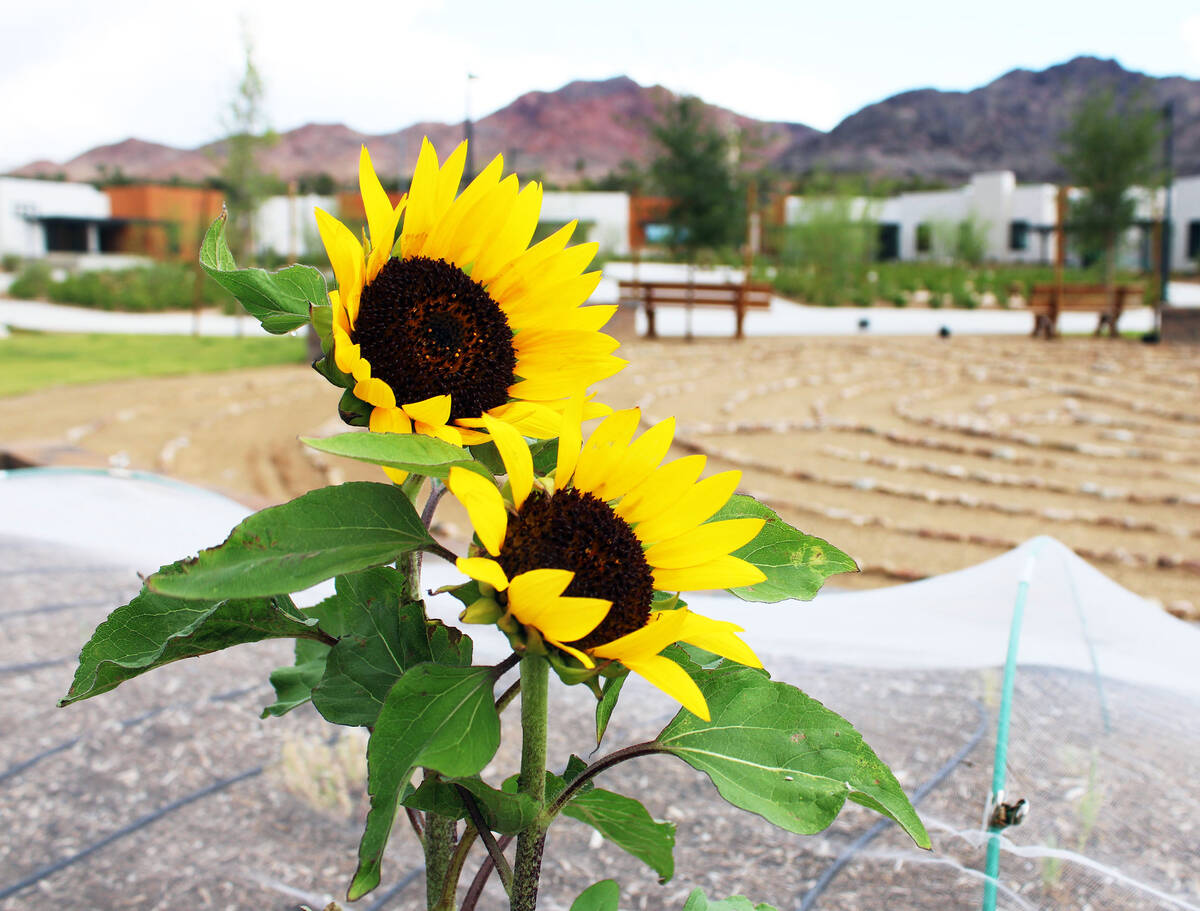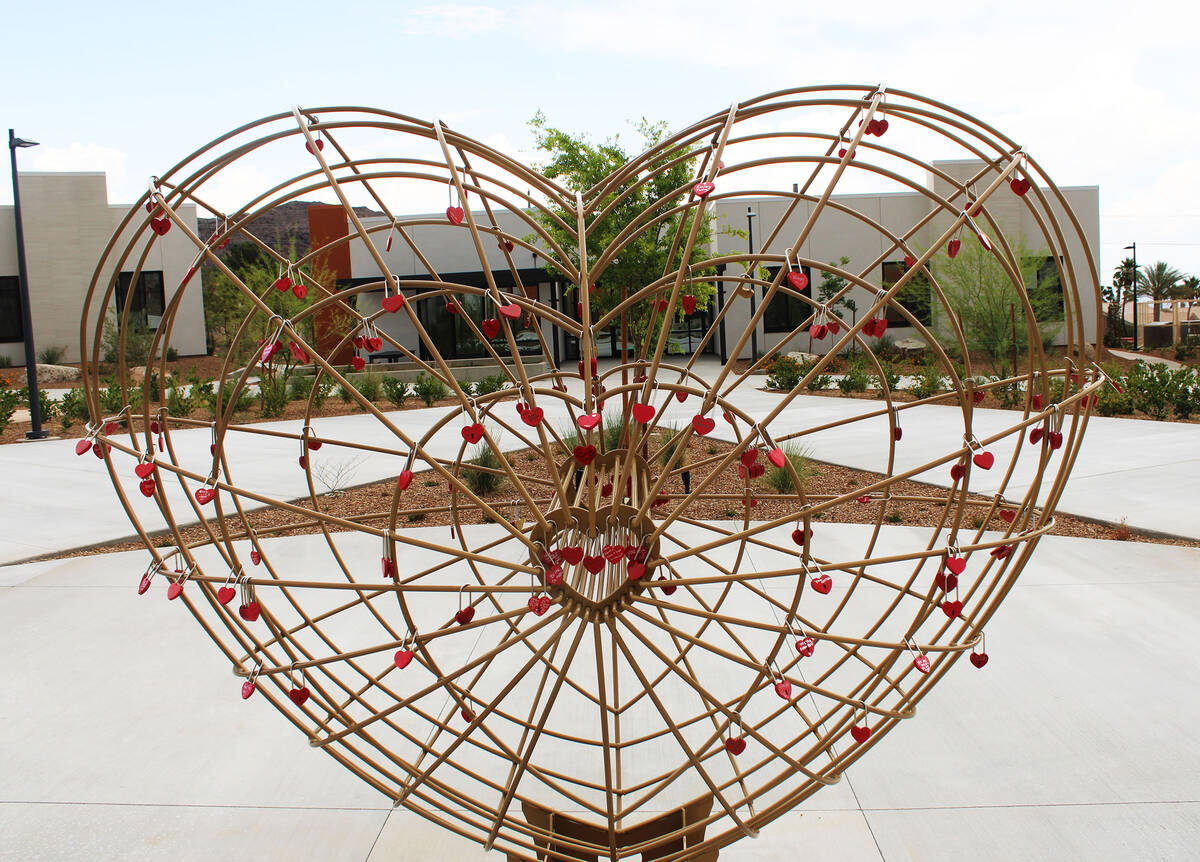‘It’s in those small moments when you see hope rising’
As Dr. Christina Vela scrolled through her phone, showing photos of girls taking part in various fun activities, for a moment she sounded more like a proud aunt instead of the CEO of St. Jude’s Ranch for Children, and now, its Healing Center.
Considering that each of the girls in those photos, who now call the Boulder City campus home, have gone through the horrors of being victims of sex trafficking, how could one blame Vela for sounding that way?
But it’s not just Vela who feels that pride as they have seen several of the girls take steps, albeit “micro baby steps” for some, toward recovery this past school year.
The Healing Center and school had its official ribbon cutting at the end of November of last year that featured state and local dignitaries. One of those was U.S. Sen. Catherine Cortez Masto, a major proponent of the Healing Center, who expressed how happy she was to see it come to fruition and that those who victimize others are now being held accountable.
“This is about moving forward and an opportunity to help so many,” she said at the ceremony. “This is our community; this is our state. If we don’t work together to benefit all of us, then we are doing a disservice to so many who need our support.”
Now, more than six months after the official opening of the Healing Center and school, Vela and Principal Amy Manning talked last week about how things have come along and the challenges of being the first in the nation to have a partnership between a nonprofit and school district for sex-trafficked children.
“Things have been wild, challenging, frustrating and inspiring,” Manning said. “But we expected there to be behavioral challenges and those kinds of things. The part that’s been hard to prepare for is the emotional connection you have with the kiddos. It’s one thing to read about someone who has been trafficked but it’s another to have a 15-year-old, who’s sitting across from you, who you know and care about, tell you her story.
“We have to make sure compassion fatigue doesn’t take over. It’s shocking to hear what some of them have been through. You try and do your best and put your game face on in that moment. Sometimes you’re going to lose that game and you end up crying with them.”
Vela agreed.
“I tell people it’s been awesome and awful all at the same time,” she said. “When a kid bares their soul to you about what happened to them, you can’t help but want to jump in and help even more. We’re hearing stories of child neglect, abuse, and incredible sexual violence. When we get into it, it’s so much more than a label of sex trafficking. In and of itself, sex trafficking is horrible, but as expected, they’ve gone through so much more in their lives.”
It takes a village
According to information from St. Jude’s, the Healing Center is unique, from its ground up: residences, holistic treatment options to survivor advocates, and trauma-sensitive design. It sits on 10 acres of land with a series of individual one-story homes that will mimic a neighborhood setting, with walking paths and extensive landscaping, designed to foster a sense of safety. The Healing Center also includes therapy offices, a multi-purpose building, meeting space, library, computer lab, a yoga and meditation room, and outside areas to encourage transformation through connection to nature.
Additionally, the school has dedicated spaces for yoga, CrossFit, and physical activity and some of the staff will be yoga certified and trauma-informed trained.
This project came with a price tag of nearly $30 million. Through a variety of partnerships and donations both big and small, Vela said it is truly a group effort. Aside from the school district, other large donators include $4 million from Clark County, multiple casino partners, including Caesars and MGM, a $2 million grant from the Engelstad Foundation and $500,000 from both the Nevada Elks and Nevada Women’s Philanthropy.
St. Jude’s is still fundraising to help cover that price tag and ongoing operational costs.
Numbers expected to increase
The school and group house had just seven girls this year. While there are five houses on campus, just one has been licensed by the county. Vela said they are ready for the others to be inspected and licensed but added that it’s a lengthy process and each house is licensed individually. She’s hoping by summer’s end to have an additional two to three homes opened. Each house needs a staff of 10-12 people and if at capacity, the campus can house 60 girls but Vela feels that 40-45 is a more realistic number.
“We want to respect the investment the Clark County School District has made in this project, so we need a whole lot more than seven students,” Vela said, adding that having a small number to start has actually worked out well as they have learned what to do and not to do moving forward.
“While I want us to serve more kids, we also want to make sure we’re learning, adapting and growing in a way that helps to serve them in the best possible way. So, there’s a huge silver living by having just the seven kids to start.”
Manning, who has 13 employees, said she’s been very proud of how that staff has surpassed expectations when working with students who have complex trauma, or “one layer of trauma on top of another,” as she put it. She said training prior to the school opening was very helpful but also challenging since there is no manual for them to go by. In a way, they are writing the manual that others will follow or take note of in the future.
“First and foremost, we have to build trust and relationships with the students,” Manning said.
While the curriculum is similar to a traditional school, the Healing Center’s school is a bit different. They have 10 minutes of teaching followed by 10 minutes of personal time, that can include utilizing one of the campus’ two walking paths.
“It took us a while to find that sweet spot but once we did, we really got into a groove,” she said of the balance between teaching and personal time.
Vela added that as the school year went on, the attention span of the students began increasing so that by the end of the school year, some kids bypassed taking that break or took one every 15 or 20 minutes.
Again, baby steps.
“I’m incredibly proud of this space we have created,” Vela said. “So many things have brought me joy. It’s in those small moments when you see hope rising.”


















